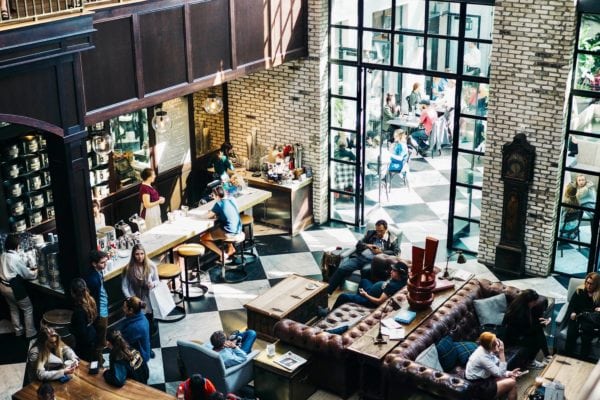UGH
Are Food Influencers Ruining the Social Internet?
I greatly dislike the term “influencers.” There’s probably not a better word for this group of people — the aspirational, perfection-touting, everywhere-all-the-time, jet-set type with social media followers in the tens of thousands. Usually it’s just the word that bothers me, but sometimes it’s the job description. A recent Bon Appetit piece outlines why:
“According to one publicist, they’ve demanded not only the complimentary meals and plus-one’s customarily offered to critics and some reporters and editors who cover food and beverage, but a free buffet of every dish on a restaurant’s menu, and plus-two’s and three’s—and sometimes eight’s. The publicist added, “I get emails: ‘I have 114.3K followers. Here’s where I’d like to go.’”
UGH, make it stop! Admittedly, you can’t hate the player without hating the game, and the truth is, posts like these, from people with huge followings, work. In a world where social media ROI is hard to prove (that would be the “butts in seats” metric), influencer outreach works. Regardless, the world of this is fascinating, and probably growing, and the BA piece does a great job of reporting on the state of the industry.
THE FUTURE
Silicon Valley Innovation and the $15 Minimum Wage
Two things dominating restaurant news coverage at the moment: the push for $15 minimum wage, and… robots. (Or, more broadly, new technologies in development that might eliminate $15 minimum wage food service jobs.) While making the point for a $15 minimum wage, Wired says, “And yet for now, the $15 minimum wage and the movement it represents will likely have as much of a disruptive effect on the future of work as anything Silicon Valley might create.” And, “In the meantime, raising that floor for everyone will mean a more substantive change for workers than anything a startup has come up with.”
The piece goes on to explain the fundamental shift that work culture has undergone thanks to the on-demand economy, fueled largely by Silicon Valley innovation, and that a $15 minimum wage may change the way that on-demand companies, like Uber, do business. “On-demand companies may start needing to compete in a labor market where people can make $15 an hour elsewhere.”
This is a discussion full of economics and politics and complicated math and lots of future-thinking. But it is a good reminder to remember that, in the face of a whole lot of change and innovation, there are humans working to earn a living. The piece finishes with a critical, “And for all of its promises of technological advancement, Silicon Valley has still shown little evidence it’s figured out how to innovate its way out of the inequalities it’s helped to stoke.”
CROWDSOURCED
Fast Food for All
For those times when you just need to have a McDonalds cheeseburger, there’s Foodida. Already launched in the sprawling suburbs of LA, Foodida users place fast food orders using an app, then crowdsource delivery. It’s sort-of the digital equivalent of “I’m going through the drive-thru, can I get you anything, bro?” You are charged a fee, a portion of which goes to the driver, and a portion to Foodida. The thing that sets this apart from the ten-thousand other delivery apps, as the Venture Beat piece points out, is that anyone, at different times, can be both driver and customer. In that way, it’s more of a community, less of a delivery service. Interesting idea.
DELIVERY
Who’s Winning Online Food Delivery?
The short answer: GrubHub and pizza. According to Forbes, giant Grubhub/Seamless controls 32 percent of the market; the largest single share. Behind GrubHub come three different pizza chains: Domino’s, Pizza Hut, and Papa John’s.
No surprises here, though after three years of writing about restaurant technology, I do have to giggle a bit when I realize how innovative pizza delivery has become. Seriously! Pizza is usually the first to adopt new and novel technology — like emoji orders and tweets. I suppose this is because pizza is common and everywhere (it was the only delivery option when I was a kid, actually). Still, I do look to the pizza delivery industry as a sign of things to come. Especially important because they make this sort of technology accessible to all; you don’t need to live in a major metropolitan area to get the technological benefits of the latest food-to-your-house innovation.
Upcoming Events
SF Bay Area: two awesome upcoming events you should put on your calendar:
- Food+Tech Connect hosts Food Waste Innovation From Farm to Fork, on Thursday, April 28 at 6:30 in San Francisco. These events, which sell out monthly in New York, are a great place to learn, network, and enjoy the company of other food-tech minds. See you there?
- The Dinner Table Event Series by BlueCart presents Kitchen CSI: Uncovering Five Ways Most Kitchens Lose Money, on Monday, May 2 in San Francisco. This event is free.
Digestifs
- Good examples of restaurant reputation management — Next Restaurants
- How Instagram is weaving its way into restaurant design (from February. Missed this!) — Tasting Table
- Epicurious made a video game out of cooking in its new video series — @epicurious on Instagram


